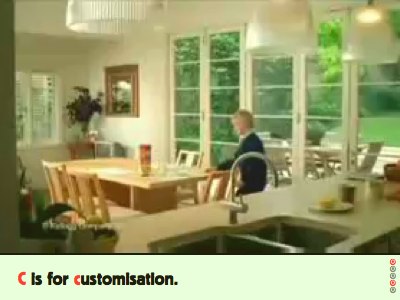The Experience Stack
Video: Coco Pops Creations commercial.
Here’s a trend—it’s the control we want to have over our products. The user-adaptive surface is getting richer and deeper.
We don’t want to buy products which are self-contained. They have to allow customisation in one of two forms:
- allow themselves to be part of a larger ecosystem, assembled by the user and not known ahead-of-time by the designer
- include in themselves some element of personalisation
People have come to expect this. I think to an extent the software world is responsible. By the way, I’m going to make a distinction between personalisation and customisation.
Personalisation is like the new Adidas Adicolor trainers where the stripes are interchangeable. They’re functional trainers whether you change the stripes or not.
Quite arbitrarily, I’m going to say that customisation, as opposed to personalisation, is like Lego bricks, or like these Coco Pops Creations: there are no defaults with Coco Pops Creations. Customisation is an intrinsic and inseparable part of use. It ain’t cereal till you mix it yourself.
Customisation is better than personalisation because customisation is necessary, and personalisation is just changing the default options.
And users never change the defaults. Options are confusing to the user, and having them means you don’t know your audience well enough. Giving people options is a mark of lazy design.
Or rather, let me clarify that. Let’s say a search engine offers a configurable option where you can have 10 or 100 items in the front page result list. Providing that option is lazy. What is this problem behind this bad solution? It’s that there are two use cases: say, people who want the few top results, and people who want the complete picture and will dig and refine further. Okay, then those need to be completely different views on the search results, with different tools and different templates and different advertising even. Yes, and okay people can choose between those because the provider can’t tell the difference between the purpose of the search… but I wouldn’t call that customisation any longer.
Next!
